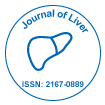Introduction: Differential diagnosis of ascites is a common clinical problem. Aim of the work: To study the value of Serum Ascites Lipid Gradients (SALG) of total cholesterol, triglyceride, HDL cholesterol, and LDL cholesterol in the diagnosis of ascites.
Materials and methods: The study was conducted on patients with ascites admitted to Tropical Medicine and Gastroenterology Department, Assiut University. The study included 115 patients with ascites of different etiologies (liver cirrhosis, tuberculosis, and malignant ascites). Clinical evaluation, abdominal ultrasonography, and laboratory investigations were conducted as follows: Serum Ascites Albumin Gradient (SAAG), serum lipid profile, and SALG of total cholesterol, triglyceride, HDL cholesterol, and LDL cholesterol.
Results: SAAG values were 1.87 ± 0.537 (>1.1), 0.58 ± 0.112 (<1.1), and 0.69 ± 0.201 (<1.1) gm/dL respectively for patients with liver cirrhosis, tuberculosis, and malignancy. The SALG levels for differentiating high SAAG (cirrhosis) from low SAAG (tuberculosis and malignancy) were 97.9 ± 28.6 versus 52.7 ± 32.35 and 49.4 ± 28.64 for SALG- total cholesterol, 74.7 ± 28.2 versus 56.9 ± 48.0 and 48.3 ± 29.23 for SALG- triglyceride, 28.67 ± 9.11 versus 18.53 ± 15.7 and 14.7 ± 14.8 for SALG- HDL cholesterol, 55.7 ± 26.1 versus 17.93 ± 38.5 and 28.5 ± 13.65 for SALGLDL cholesterol respectively. These values are significantly higher in cirrhosis than tuberculosis or malignancy. The cut-off SALG values being 67 mg%, 66 mg%, 26 and 49 mg% in cholesterol, triglyceride, HDL cholesterol, LDL cholesterol respectively in differentiating cirrhotic ascites from tuberculosis or malignant ascites A close relationship between the levels of SALG and severity of cirrhosis is found but it is not significant.


